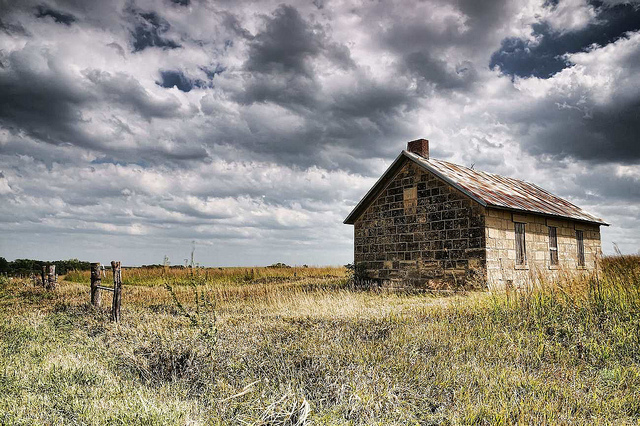A lot of change is happening in education these days that has me thinking about where it’s coming from and where it’s going. What have been the openings and closures that have shaped and are shaping the social machine of human education? As I collect research and thoughts, I’ll be posting them here under the general category of Opening Education.
When I want to learn something beyond the obvious about a topic I know very little about, I like to pick a random entry point and just dive in. To start a new exploration on the history of education, I decided to dive in to learn about the built space of schools and after only a short time, I started to connect some rather interesting dots.
My first—admittedly quick and shallow—exploration of the history of K12 school design and building in the USA leads me to jump to the—perhaps rather obvious, but I think important—conclusion that school facilities in the USA have not been shaped primarily by educational goals, but by larger patterns in demographics and economics: Influxes of immigrants, civil rights being extended to or taken away from specific populations, bulges in birthrates, decreasing child mortality, and economic changes such as the move from primarily agrarian to primarily industrial and on to primarily service/knowledge economies.
For example, the nostalgic view of one-room schoolhouses one typically gets from Little House on the Prairie doesn’t touch on how the funding and construction of such schools was generated by government policies encouraging the westward settlement of the USA.
Or in the 19th Century, social changes including industrialization, immigration, urbanization, child labor laws, and compulsory education combined to generate larger school facilities in cities, designed as educational factories to process growing student populations.
There are many more examples of the close ties of school construction and social changes that suggest learning—as we might like to think of it—was not the primary driver of school design.
On the flip side: from Catherine Beecher, Horace Mann and Thomas Dewey’s work on educational reform to Richard Henry Pratt’s work on Native American education, I also found lots of examples of efforts to improve learning—and thereby society—that led directly to calls for changes in school design and construction. At turns well-meaning or self-interested, enlightened or benighted, these ideas and activities had widely varying impacts on actual educational realities, but none appear to have shaped actual schools as dramatically as more basic social forces.
In short: we don’t really design or build schools to better educate people. We design and build schools to process large numbers of people to fit into current socio-economic roles. Resources and efforts to design and build schools follow demographic and economic demands—not educational needs. Despite accompanying lofty rhetoric, most school design and construction seems to be driven primarily by reactive and shortsighted efforts to deal with current social and economic pressures, rather than our desires to have education shape and improve our cultural, social and economic future.
If that’s the pattern, what socioeconomic forces are shaping today’s educational initiatives? I’ll be exploring answers to that question and I welcome yours!
